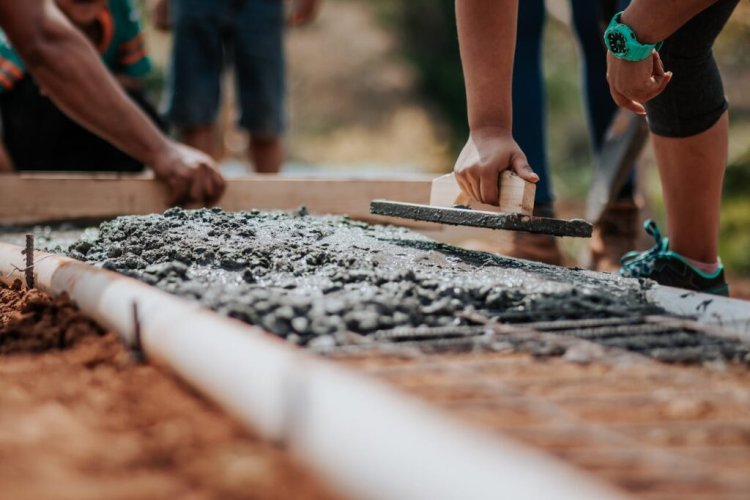Navigating Concrete Sidewalk Costs in Your City: A Comprehensive Guide for US Homeowners
concrete sidewalk cost, city sidewalk

A well-maintained sidewalk not only enhances your property's curb appeal but also ensures safety and accessibility for your family and neighbors. Whether you're planning a new installation or repairing an existing one, understanding the factors influencing concrete sidewalk cost and city sidewalk regulations is crucial. This comprehensive guide will walk you through everything you need to know, empowering you to make informed decisions for your project.
Understanding the Factors Influencing Concrete Sidewalk Cost
Several elements contribute to the overall concrete city sidewalk cost. Accurately assessing these factors will help you develop a realistic budget and avoid unexpected expenses.
-
Size and Area: The most obvious factor is the size of the sidewalk. Larger projects naturally require more materials and labor, leading to higher costs. Contractors typically calculate the area in square feet to determine the amount of concrete needed.
-
Concrete Thickness: The required thickness of the concrete depends on the intended use and local building codes. Sidewalks typically range from 4 to 6 inches thick. Thicker concrete provides greater durability and longevity, especially in areas with heavy foot traffic or freeze-thaw cycles, but increases the material cost.
-
Materials: The cost of concrete itself is a significant factor. Prices can fluctuate based on market conditions and the type of concrete mix used. Some projects may require specialized mixes with additives to enhance strength, durability, or aesthetic appeal, which can impact the overall material cost.
-
Labor Costs: Labor is a substantial portion of the total cost. This includes the cost of site preparation, formwork, pouring and finishing the concrete, and cleanup. Labor rates vary depending on the location, the contractor's experience, and the complexity of the project.
-
Site Preparation: Before pouring the concrete, the site needs to be properly prepared. This may involve excavation, grading, removal of existing structures (like old sidewalks or landscaping), and ensuring a stable base. The extent of site preparation can significantly influence the overall cost.
-
Formwork: Formwork is the temporary structure used to contain the wet concrete until it hardens. The complexity of the formwork, especially for curved or intricate designs, can affect the labor costs.
-
Finishing: The finishing process gives the sidewalk its final appearance. Different finishes, such as broom finish, stamped concrete, or exposed aggregate, have varying costs. Decorative finishes typically require more labor and specialized skills, increasing the overall cost.
-
Permits and Inspections: In most areas, you'll need permits for sidewalk construction or repair. Permit fees vary depending on your location. Inspections are also typically required to ensure the work complies with local building codes. These costs should be factored into your budget.
-
Accessibility Requirements: The Americans with Disabilities Act (ADA) sets accessibility guidelines for public spaces, including sidewalks. If your project involves a public sidewalk or connects to a public right-of-way, you'll need to ensure compliance with ADA standards, which may add to the cost.
-
Location: Construction costs vary significantly across different regions. Labor rates, material costs, and local regulations can all influence the final price. Urban areas typically have higher costs compared to rural areas.
Understanding City Sidewalk Regulations
Navigating city sidewalk regulations is essential to ensure your project complies with local laws and avoids potential fines or legal issues.
-
Permits: Most cities require permits for sidewalk construction, repair, or replacement. The permitting process ensures that the work meets safety standards and local building codes. Contact your local building department or city engineer's office to obtain the necessary permits.
-
Inspections: After the work is completed, inspections are typically required to verify compliance with building codes and permit requirements. Schedule inspections with the city's building department.
-
Sidewalk Maintenance Responsibility: In some areas, homeowners are responsible for maintaining the sidewalks adjacent to their property. This may include repairing cracks, removing snow and ice, and ensuring the sidewalk is safe for pedestrians. Check your local ordinances to understand your responsibilities.
-
Accessibility Requirements: As mentioned earlier, ADA compliance is crucial, especially for sidewalks connected to public spaces. Ensure your design and construction adhere to ADA guidelines regarding width, slope, cross slope, and detectable warnings.
-
Tree Planting and Landscaping: Regulations may exist regarding tree planting and landscaping near sidewalks. Check with your city's arborist or planning department for guidelines on tree placement, root barriers, and landscaping materials.
-
Utility Lines: Before starting any excavation, locate and mark underground utility lines. Contact your local utility companies to avoid damaging pipes or cables during construction.
Getting Accurate Concrete Sidewalk Cost Estimates
Obtaining accurate cost estimates is crucial for budgeting and project planning.
-
Multiple Quotes: Get quotes from at least three different contractors. This will allow you to compare prices and services.
-
Detailed Estimates: Ensure the estimates are detailed and include a breakdown of costs for materials, labor, site preparation, permits, and other expenses.
-
Contractor Experience: Choose a licensed and experienced concrete contractor with a proven track record. Check online reviews and ask for references.
-
Insurance and Bonding: Verify that the contractor has adequate insurance and bonding to protect you from liability in case of accidents or damage.
-
Written Contract: Before starting the project, have a written contract that clearly outlines the scope of work, payment terms, timeline, and warranty information.
Tips for Saving on Concrete Sidewalk Costs
While quality should never be compromised, there are ways to potentially save on concrete sidewalk costs.
-
Simple Design: Opt for a simple, straight design instead of complex curves or patterns. This can reduce labor and formwork costs.
-
DIY (If Possible): For smaller projects, you may be able to do some of the work yourself, such as site preparation or cleanup. However, consider hiring professionals for the concrete pouring and finishing to ensure quality and structural integrity.
-
Shop Around for Materials: Compare prices from different suppliers to find the best deals on concrete and other materials.
-
Timing: Consider scheduling your project during the off-season (if weather permits) when contractors may have lower rates.
-
Proper Maintenance: Regular maintenance, such as cleaning and sealing, can extend the life of your sidewalk and prevent costly repairs in the future.
Conclusion
Constructing or repairing a concrete sidewalk is a significant investment. By understanding the factors influencing concrete sidewalk cost, navigating city sidewalk regulations, and obtaining accurate estimates, you can make informed decisions and ensure a successful project. Remember to prioritize quality and safety while staying within your budget. A well-planned and executed sidewalk project will enhance your property's value, improve safety, and contribute to the overall beauty of your community. Contact us at HiTech Construction NY for expert advice and professional concrete services. We’re here to help you navigate the process and create a beautiful and durable sidewalk for your home.
What's Your Reaction?


















.jpg)
